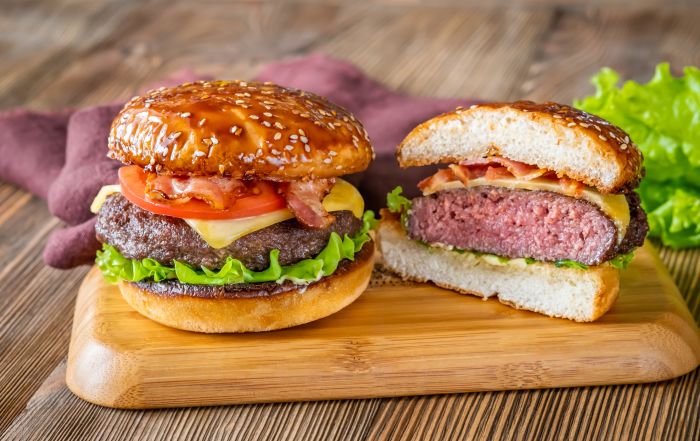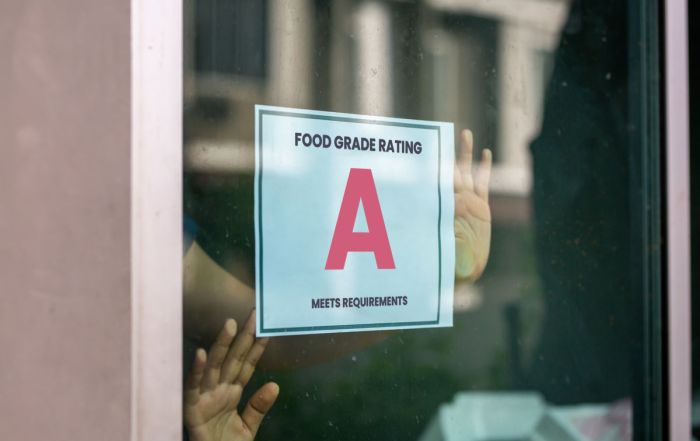Be Aware When You Prepare – Food Prep Tips

Food Prep Steps — Regardless of how many steps may be involved in food production and service, foodborne illness prevention requires effective food safety measures that ensure good personal hygiene, avoiding cross-contamination and temperature abuse. In small food establishments, such as a convenience store or sandwich shops, the steps for storage, preparation, and service is a fairly simple sequence done by one or two crew members. In large restaurants, supermarkets, or institutional feeding facilities, food production may span several hours or days in many more complex steps done by several food workers. Educating all workers about preparation hazards is a crucial task for managers.
The Preparation Principles include these basics:
Control time and temperature. Keep food out of the temperature danger zone of 41°F to 135°F (5°C to 57°C) as much as possible. Prepare food in small batches. Use “batch preparation” methods to only take as much food out for preparation in room temperature conditions as you can handle in a short period of time. Refrigerate food if interrupted during preparation. Refrigerate or cook food as soon as you are done with preparation.
Always pre-chill ingredients and dressings for any cold salad or cold dish before mixing them together, such as chicken or tuna salad, potato or pasta salad.
Always cook food to the required minimum internal temperature to keep it safe. Check the minimum internal cooking temperature or core temp. for each food with a stem thermometer. Temperatures vary from food to food, so check the FDA Food Code as well as your local state requirements.
[download id=”818″]Cool food rapidly. Use the 2 stage cooling method. Stage 1: Cool food from 135°F to 70°F (57°C to 21°C) within 2 hours. Stage 2: from 70°F to 41°F (21°C to 5°C) or lower in an additional 4 hours or less. To cool food quickly: divide the food into smaller portions, put the food containers in an ice-water bath, and stir regularly with an ice paddle if a liquid food. Use shallow pans – metal cools faster than plastic. You can also use a blast chiller to cool the food more rapidly. Do not cover hot foods tightly – the faster the heat is allowed to be removed, the safer your food. Improperly cooling hot foods is the #1 bacterial cause of foodborne illness.
There are 4 acceptable ways to thaw food safely. 1) In a refrigerator at 41°F (5°C) or lower. 2) Under running water at 70°F or lower. 3) In a microwave oven, if the food is small enough. 4) As part of the cooking process.
Prevent cross-contamination. Wash your hands before working with each food type (raw vs. ready-to-eat foods). After handwashing, follow a policy of no bare hand contact with ready-to-eat food as an additional food safety barrier by using utensils, gloves or paper wraps at the appropriate steps. Mistakes in the handwashing and hygiene area account for the #1 cause of all foodborne illness outbreaks. Use different cutting boards to keep raw and ready-to-eat food separate. Clean and sanitize equipment and work surfaces after each task.
Bottom Line: Think ahead – allow enough time for thawing, cooking, and cooling within the safety limits of the “temperature danger zone”. Talk you your crew about their role in safe preparation of food and be specific about the tasks they do. Each crew member may not be involved in all the preparation activities mentioned above, but it is important to remember the general principles for food safety and to follow the “prep step” rules at your workplace.
***
About the Author: Lacie Thrall

READ MORE POSTS
Embracing Technology for Enhanced Food Safety in Foodservice Operations
Technology. We love it, we hate it. I’ve always been fascinated by technology; I remember getting my first Blackberry in the mid-90s and thinking it was the pinnacle of technological advances. Before that, I remember ordering a dictation program in college that was going to revolutionize the way I “typed” my assignments. Looking back, it really wasn’t worth the box that the program came in. Now, we have ChatGPT that will write the entire paper for us!
Meat Color and Doneness: Persistent Pinking
Late in June, my family and I were able to visit the Black Hills, an area of the country in which I have not had the opportunity to spend much time. One evening, as we dined at a local restaurant, I observed a table across the dining room sending back a dinner. While I couldn’t hear the entire conversation and I certainly wasn’t trying to eavesdrop, it was apparent that the customer was unhappy with the cooking of their hamburger and was sending it back because it was too pink in the middle. That immediately brought to my mind the phenomenon known as persistent pinking. A term I became familiar with because of work done by some colleagues here at Kansas State, which they present each summer to a group of foodservice operators who join us on-campus for an in-depth week-long look at all things food safety.
Quat Binding – Why this Can Have a Disastrous Impact on Your Sanitation Program.
In June, I had the opportunity to represent FoodHandler and speak on food safety behavior for customers of Martin Bros. Distributing in Waterloo, Iowa. One of the questions that was asked caught me a little off guard. The question was about quat binding. It caught me off guard not because it was a bad question, but only because it was not something I had previously been asked nor had not yet been exposed to the phenomenon. However, I soon learned that in certain jurisdictions, it is resulting in changes to how sanitizing cloths are to be stored in sanitizing buckets (or not) in the foodservice industry. When I returned home from the trip, I had to dig into it to learn about what quat binding is and how it might impact foodservice operations.
Are Grades for Foodservice Inspections a Good Idea?
I generally try to stay away from controversial topics in my blog, but this is one I thought it might be interesting to discuss. Occasionally on my travels, I will come across a state or a local jurisdiction that requires foodservice inspection scores be posted in the window of the establishment. The idea is to allow would-be customers the ability to see how the foodservice operation in which they are about to eat scored on their latest health inspection.










